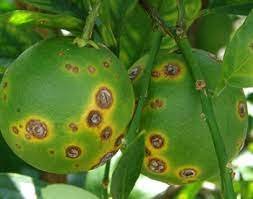Another reflection from my Substack Newsletter, Mobile Fragments.
A lot can happen over seventy hours: one can go on a camping trip or grow an E. coli culture in a Petri dish. Last weekend, while visiting a dying relative in my hometown of Miami, there were a series of deadly mass shootings that occurred in eight cities. These tragedies shook me to the core, especially knowing that the shootings injured 65 people, and left 17 people dead. The shootings that particularly stuck with me were the ten Black people who were murdered by a white supremacist in Buffalo, New York, and a gunman that targeted a Taiwanese church killing one person and injuring five people in Laguna Woods, California. These shootings are not an aberration, but they have become commonplace in a country that has become a penchant for gun owners. As of 15 May 2022, there have been 198 mass shootings in the United States. Relatedly, 7,000 people have died from homicide and gunshots.
Referring to the death of 3 Korean women and 10 Black people over the weekend, the poet Cathy Park Hong noted on Twitter over the weekend, “To live in this county is to be in a constant mourning.” People are grieving and incensed because basic tasks—such as grocery shopping, going to a flea market, and attending church—can be a person’s last moments. America’s gun problem isn’t new, but the unabashed aggression of white supremacists, open carry laws, and “stand your ground” have left a morose and indelible mark on society.
Given that I was in Florida, I couldn’t stop thinking about how my state of birth fit into the nation’s gun laws. In 2005, three years after I left for college, Florida became the first state to enact a “Stand Your Ground” law, which removed responsibility from those using deadly force in cases of alleged self-defense. The state of Florida was not unique—and as of 2020, twenty-seven states have these laws in place—meaning many states have variations of “stand your ground” laws. In 2012, while Trayvon Martin was visiting his father’s home at the Retreat at Twin Lakes housing complex in Sanford, Florida, he was gunned down by George Zimmerman, a self-proclaimed neighborhood watch person. When the Sanford police arrived, they questioned Zimmerman, who used the “Stand Your Ground” law in his defense. Zimmerman claims that he felt intimidated by a teenage Black boy carrying a bag of Skittles and a soft drink. Nationally, people remarked on this, and President Barack Obama opined: “If I had a son, he’d look like Trayvon. And I think they are right to expect that all of us as Americans are going to take this with the seriousness it deserves, and that we’re going to get to the bottom of exactly what happened.” While this rhetorical gesture spoke to some, it was an empty remark. Already in its seventh year when Zimmerman murdered Martin, Florida’s “Stand Your Ground” law and ongoing anti-Black racist attacks sparked a social movement.
After Trayvon’s brutal murder, Black activists organized around the country, which led to the arrest of Zimmerman, forty-four days after Trayvon was slain. The movement—Black, queer, and feminist-led—echoed the cries for a new generation of activists who rallied for material and political change to protest policing, incarceration, and killings. By allowing police and white American vigilantes to use deadly force upon someone—the “Stand Your Ground” legislation justifies the actions of racist vigilantes to cause harm to Black people. Anti-Black racism does not only cause physical injury, it is also psychological terror when racists boast about murdering Black children. Each time I visit Florida, my spirit is split between finding comfort in my biological kin and anger at a state that places more value on guns than people.
Citrus Canker
Tropical fruits in Florida are abundant. Citrus fruits, and oranges, in particular, are integral to South Florida’s economic and social life. Growing up in the Sunshine State, I would experience the breeze through these trees on a hot summer day or notice the germination of the fruits in late spring. Florida oranges, if left to ripen on the tree, often have a thick skin with a sweet core. Since the early 2000s, canker disease has prevented some oranges from achieving their saccharine flavor. The infection, which can quickly spread from tree to tree, causes the fruit to shrivel, brown, and prematurely die. Similar to the way that canker disease diminishes the life of an orange, racism is a disease that prematurely shortens the life and possibilities of Black people in Miami. In Florida, freedom feels like a far-off dream.
What I have written
In case you haven’t had a chance to read my latest articles, please check out the following:
London Review of Books | On Reproductive Justice
e-flux | Contagion on the Plantation
London Review of Books | Diseases of Relevance
What I have read
Recently, I sat with these texts, and they have managed to touch my spirit and offer a bit of lyrical beauty and mordant portrayals of Black life during this taxing period.
Mitchell S. Jackson | Twelve Minutes and a Life
Latria Graham | Out There, Nobody Can Hear You Scream
Tobi Haslett & Jessica Swoboda | Violent Antagonisms
